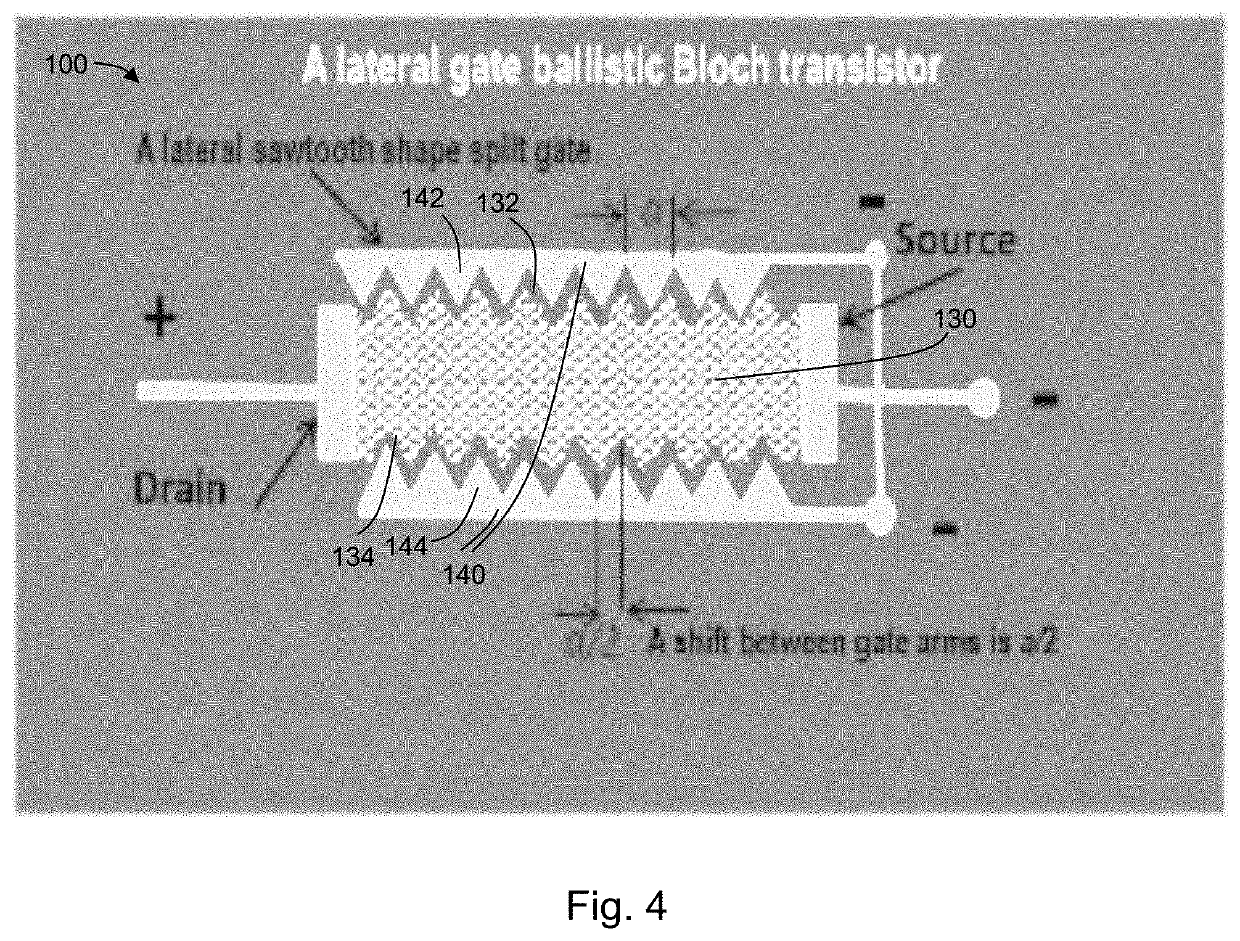Ballistic field-effect transistors based on bloch resonance and methods of operating a transistor
a field-effect transistor and bloch resonance technology, applied in the field of field-effect transistors, can solve the problems of reducing the effectiveness of the mosfet, unable to function properly, and continuing advancemen
- Summary
- Abstract
- Description
- Claims
- Application Information
AI Technical Summary
Benefits of technology
Problems solved by technology
Method used
Image
Examples
Embodiment Construction
[0039]In a first aspect, the present disclosure may be embodied as a semiconductor device 10 (a lateral-gate ballistic Bloch field-effect transistor or “BBFET”) having a source 22 and a drain 24 spaced apart from the source 22 (see, e.g., FIG. 2). The source 22 and the drain 24 may be fabricated using known Ohmic technology. In some embodiments, the structure may be disposed on a substrate 12. A channel 30 is electrically connected to the source 22 and the drain 24. The channel 30 may be a two-dimensional conducting layer (2DCL), such as, for example, a two-dimensional electron gas (2DEG). The channel 30 has a length (i.e., a channel length) measured from the source 22 to the drain 24. The channel length (L) is selected to be less than or equal to an electron mean free path of the material from which the channel is made (as further described below). In this way, the channel 30 has a ballistic electron transport-resulting in the BBFET as a ballistic transistor. Depending on channel ...
PUM
| Property | Measurement | Unit |
|---|---|---|
| Fermi level | aaaaa | aaaaa |
| current oscillations | aaaaa | aaaaa |
| current oscillations | aaaaa | aaaaa |
Abstract
Description
Claims
Application Information
 Login to View More
Login to View More - R&D
- Intellectual Property
- Life Sciences
- Materials
- Tech Scout
- Unparalleled Data Quality
- Higher Quality Content
- 60% Fewer Hallucinations
Browse by: Latest US Patents, China's latest patents, Technical Efficacy Thesaurus, Application Domain, Technology Topic, Popular Technical Reports.
© 2025 PatSnap. All rights reserved.Legal|Privacy policy|Modern Slavery Act Transparency Statement|Sitemap|About US| Contact US: help@patsnap.com



